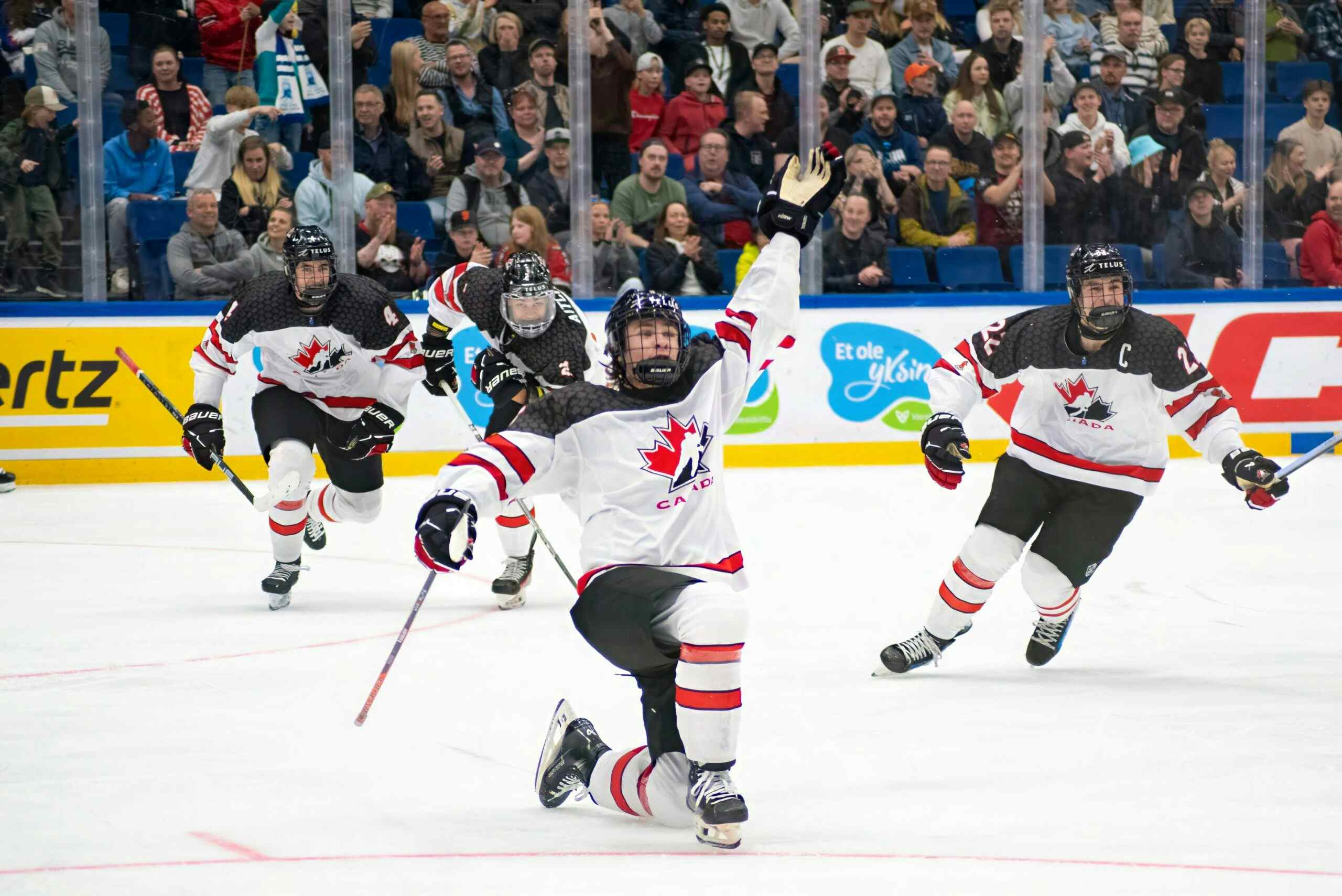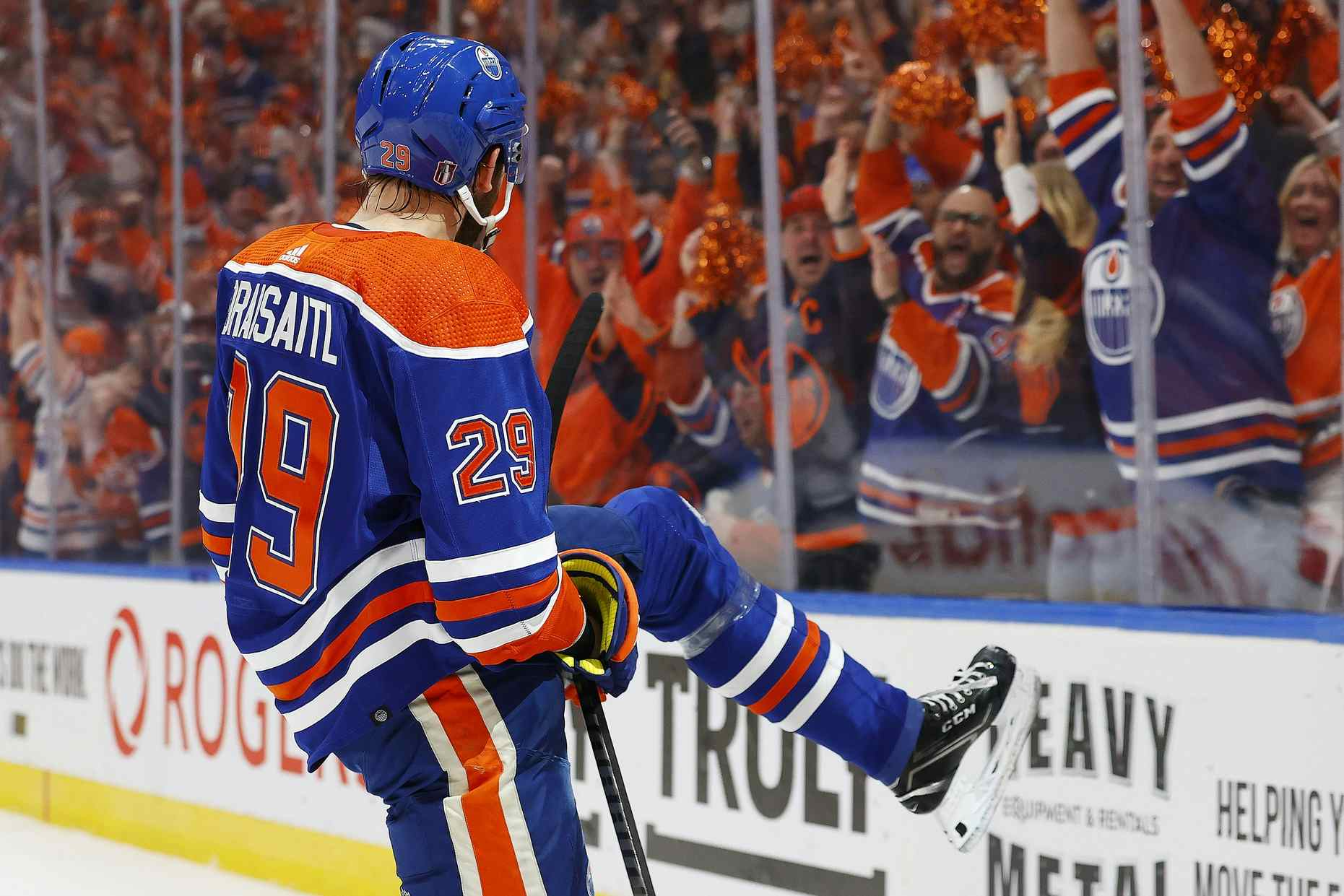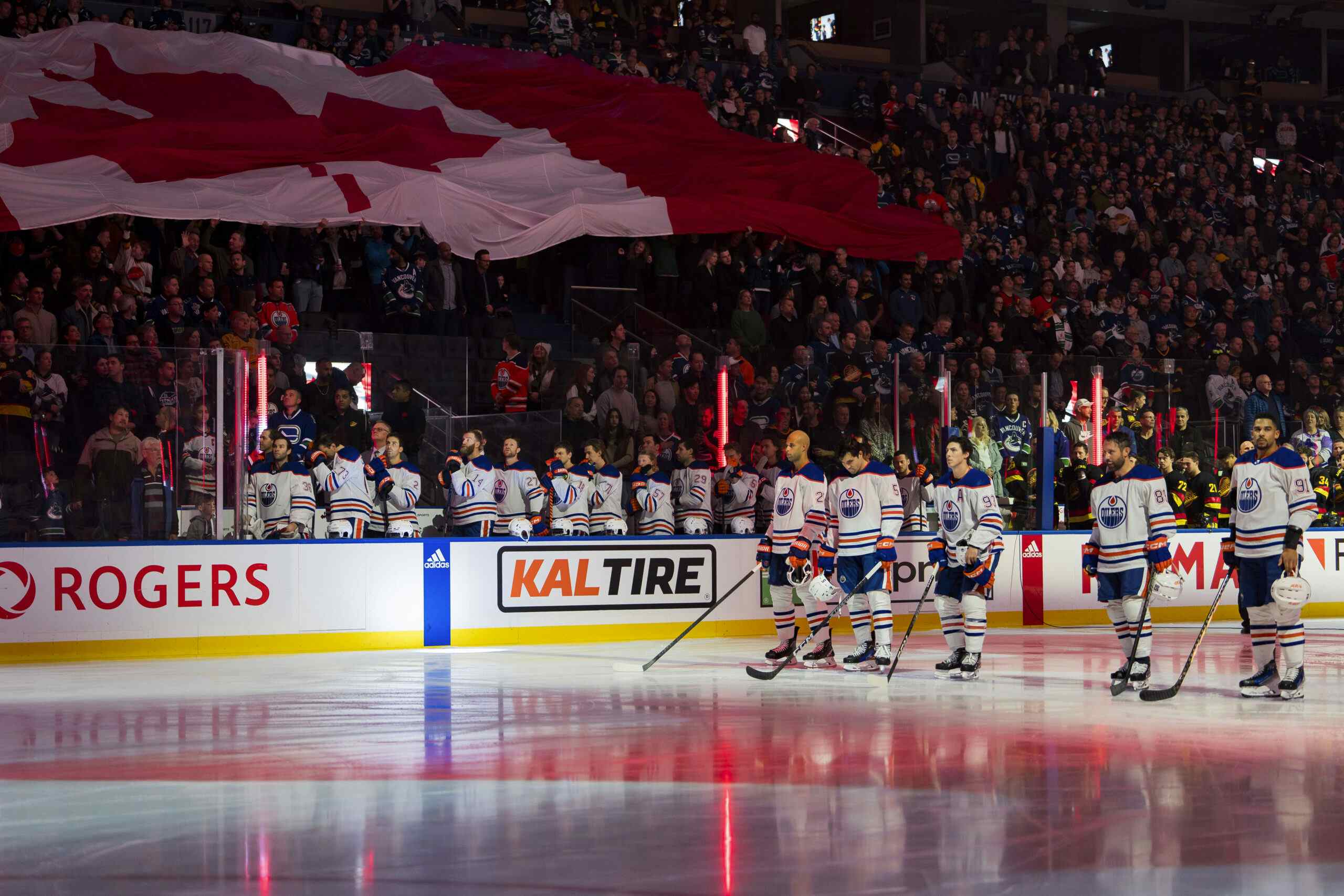LOTTERY TO LAND ARENA?
By Jason Gregor
11 years ago
For the past 18 months everyone involved in the Downtown arena recognized there was a massive shortfall of $100 million, however, neither the city nor the Katz Group has come up with any viable options on how to fill that void.
Yesterday the leader of the Wildrose Party Danielle Smith,proposed that the province use KENO lottery to fund the missing $100 million. Smith joined me in studio yesterday to discuss her proposal.
Gregor: Why haven’t we done this before?
Smith: It has been proposed in the past actually. In the early 2000s, both of the teams were looking for some kind of lottery revenue approach and this is one of the ideas that was floated at the time. They went, instead, with more of a scratch and win type of ticket and it didn’t raise much revenue – it raised only a million dollars, which clearly would not have been enough to meet the needs of the team to be able to build an arena. So I think it went by the wayside.
I think at the time, the provincial government figured they would just operate KENO through a limited number of lottery terminals, as well as through Bingo halls. As a result, we only have 88 places where you can play this KENO game in Alberta. By contrast, in British Columbia, you can play it in 4,000 places, including about a 1,000 sports bars and pubs which is where the bulk of the revenue is generated because it is a brand new group of people who are playing a game that normally don’t play these kind of lottery games at all. Also, when you’re watching a game, having a beer, your team is playing; it’s almost like pull tabs or some other kind of sporting game that you might decide to play in a bar.
This is the reason why it generates a huge amount of revenues. In Alberta, the way it’s currently marketed it generates $3 million. In BC, the way it’s marketed, it generates a total of $235 million total. Now there’s lots of money that goes to pay out and administrative costs, but we think this is going to be enough to find that $100 million funding shortfall for both cities, within the space of 5 years. I think that’s the kind of things that Albertans are looking for. I don’t think there is a huge appetite for tax payer dollars to directly go to these teams. This is a way for us, to actually support both the City of Edmonton and the City of Calgary in trying to get a major new facility.
The WRP projected that KENO would generate $196 million. $137 million would go to winners, $5 million to AGLC administration, $5 million to establishments hosing KENO and $49 million in proceeds.
Out of that $49 million, $20 would go towards arena in Edmonton, $20 million towards Calgary arena, $4 million to AGLC lottery fund, $2.5 million to Oilers charity foundation and $2.5 million to Flames charity foundation.
Gregor: What would be the costs to go from taking it to 80 locations up to 4000?
Smith: The costs would be very small. I’ve talked to somebody who was initially involved with pitching this KENO idea with the teams back in the 2000s. He’s worked both for liquor and gaming in Alberta and in British Columbia. What has happened in Alberta, because we already have this game, this KENO game, all of the software technology and the kiosks are already set up to be able to handle it. It’s just a matter of scaling up. The cost of rolling it out to sports bar is minimal because the cost is born by the pub owner. So they put the big screen TV up, which used to cost a couple thousand dollars a few years ago and now it only costs a few hundred dollars, and they also pay for the terminal that’s used to process the ticket.
Gregor: This is the five minute KENO game that you’re proposing?
Smith: It is. It’s very much like Lotto 649; except for it’s played every five minutes. You choose your numbers, you put it into the machine, and then you check it every five minutes. So over the course of a few hours, watching a game, you might play five or six times. In other jurisdictions, they limit the size of the bet; the size of the payout is limited as well. If you get all of your numbers are chosen, the maximum you can win is $100,000. It’s just sort of a fun way to pass the time while you’re sitting, enjoying a beer with friends.
Gregor: Will KENO take away money from other lotteries, and essentially other charities where that money ends up?
Smith: It doesn’t appear to. If you look at British Columbia, we have very similar games across a whole range of things. So if you look at the revenues they get from Lotto 649, comparable to what we get here. We have Sports Select; they have a similar type of game- comparable revenues there as well. Where the gap appears to be, is the game of KENO where BC spends $235 million vs. $3 million here, as well we feel it goes towards a different audience. From what we can tell and from the advice of the person I’ve been working with who understands how the game works both here and in BC, he thinks there’s a very low risk of seepage away from other types of games. It would actually, in the long run, potentially increase the amount that goes to charity.
What we’re proposing here, we know that teams only needs to fill that $100 million funding gap. If this is a game that the province wants to continue, if they adopt it, then they have a whole number of options. You can have the whole amount then go to charity, after the five-year funding for the arenas is up. You can have the money continue to flow through to the municipalities to be able to fund other types of recreation infrastructure, like community arenas or outdoor ice rinks, or field houses. You could also broaden it out, so you could fund municipal infrastructure in other municipalities. We think there are lots of options.
But the thing is you actually have to have a team effort put behind marketing this product. We think that’s the big difference between BC and Alberta. No one knows that we even play KENO in this province. I’ve mentioned it a number of times now over the last few hours and people say, “What is that game? I’ve never even heard of it.” So I think there really is just an opportunity here that hasn’t been capitalized on before. We think that you probably can’t get better marketing arms than the Oilers’ and the Flames’ marketing teams. This could be a way for us to get the best of both worlds.
Gregor: Has anyone looked into single game betting? Why has that not come into place?
Smith: I think it’s in the process of going through the Federal Legislature right now. It’s in the Senate, a bill that would allow that. I think the reason why teams have been reluctant to press that, is that there have been- the way Sports Select works right now is, you have to be on three games. So the chance that you might end up with any kind of interference in the outcome, I mean let’s face it we did have scandals in the past of teams throwing the game to be able to satisfy gambling bets that were being made. I think that’s part of the reasons that protections came into place when these games were introduced here. It would be very hard to manipulate the outcome of three games at once and get three different teams to throw the games. So, moving to a single bet option, I have not heard that there is support for that kind of approach among the teams for that reason. There has been, in the past, these kinds of things have been manipulated and it’s cast a pile over the whole incidence of betting in sports.
Gregor: I’m looking at the comparables to the BC sales and lottery right now and compared to Alberta. BC is at around $1.01 billion and we’re at about $744 million. Obviously BC is a bigger population base, but Alberta has the third highest per capita gambling in the country. Is our economy strong or deep enough to put extra money towards KENO without taking from elsewhere?
Smith: I think so. If you look at, for instance, the Lotto 649 revenues- $161 million in BC versus $153 million here, they’re very comparable. If you look at the Sports Select revenues we actually have more people betting thru Sport Selects here than we do in British Columbia…
Gregor: That’s probably because the Oilers stunk the last few years, and people knew they’d lose so guys were betting more.
Smith: (laughing) If you even just look at those, the population doesn’t make a big difference. I would actually suggest that the numbers we’re putting forwards are very conservative because we’ve got two major NHL teams, you would expect that number of people knowing that a portion is going towards funding the arenas; you might find that more fans are willing to play this game than might otherwise. I think that our numbers are very conservative. From what we can see, the numbers of dollars that are bet in these different games are comparable between British Columbia and Alberta. We would fully expect that this would actually bring other people into playing the game, just for the benefit of being able to direct the money to the Flames and the Oilers.
Gregor: What happens in five years when the $100 million is allocated to the rinks? Where does that $40 million a year go? Could Northern and Southern Alberta municipalities apply to qualify for funding of amateur rinks? Would that be the next obvious step to this?
Smith: It’s possible you could do it that way. We think that there should be some benefit to the teams if we’re actually going to see it marketed and people are going to play it because they want to support the Flames and the Oilers at the beginning until those arenas are funded. We think that there can be an argument made, about why the lion’s share of it should go to support the building of those two facilities. I take your point that there will always be detractors of every idea. I look at these arenas, not as being arenas for the teams; I look it as being municipal infrastructure.
I think that Mayor Mandel has said that as well. Although the Oilers would be the principle tenant, it’s also used for trade shows and concerts, and other types of events. So it becomes a center of the new development that they are trying to do downtown. If the Oilers, Heaven forbid, were ever leaving Alberta, they can’t take the arena with them. So it is a piece of municipal infrastructure. The bulk of the cost is being born by the municipality. It is just that we have this $100 million shortfall. We think that because they have been talking about this for months and months and months, they’ve reached an impasse, we think that we need to look at and propose something new and that’s what we’re trying to do.
Gregor: Any idea how long it would take to implement it?
Smith: I don’t think that it would take that long. I’ve spoken with the person who was helping me develop this proposal. My view is that it would probably take a year to 18 months to be able to get it completely rolled out. We already have the 2200 kiosks that are already providing all of the other games. That infrastructure is already there, the software is already there. The bar owners, there would have to be an administrative process where they would go through and determine whether or not they’ve got a license to play it or not. The cost of setting it up with the big screen TV and the actual kiosk would be born by the individual bar or pub owner. All of those things could happen very quickly.
Gregor: What would be the next step now? Do you have to present it to the Conservatives? What is the actual process for this?
Smith: Well, we wrote a letter this morning to Premier Redford, giving her my speaking notes as well as the proposal, the PowerPoint presentation asking her to keep an open mind and considerate it. It would require a lot of effort on the part of both of the municipalities, the AGLC, as well as both of the teams to come together with the Provincial Government to work out how it works.
I’m conscious of the fact that Mayor Mandel in the middle of December, said he’s really pushing for an agreement by the end of January. This is the reason why we’ve decided to put a little more meat on the bones on this proposal, so that we could propose something that would be very easy to implement because we’re already doing it and use the power of the Oilers’ and Flames’ marketing arms to be able to get this more broadly accepted. I have not officially heard from Government on it.
We have called both the offices of Mayor Mandel, as well as Mayor Nenshi in Calgary. My next step is also to roll it out and let the teams of the Oilers and the Flames as well. Hopefully if people see that there’s a real opportunity here to benefit of this, hopefully they’ll be able to come forward with a proposal in the coming months to be able to implement it. I’ve been encouraged by the fact that Finance Minister Dough Horner, it’s his area that this falls under, said in the middle of December that he was open minded to looking at gaming options to be able to fill this funding gap. We think that we’ve provided a solution that everybody should be able to embrace.
RECAP
It was refreshing to see someone at least propose an idea, other than do nothing, however, I’m not certain this KENO plan will generate the money Smith and the Wildrose project it will.
After the interview I did some research and found that there is one major difference between gambling habits in B.C and Alberta that the Wildrose Party didn’t outline in the comparisons.
Alberta has 6,000 VLTs (Video Lottery Terminals) in bars and other establishments, while BC only allows them in casinos and bingo halls. Essentially B.C residents spend $235 million on KENO, but not much on VLTs. While in Alberta we spend millions on VLTs, but on $3.1 million on KENO.
Currently there are 11,311 VLT/slots in BC and $19,260 in Alberta. I don’t see how we can introduce another 2000-3000 KENO machines without impacting VLT spending, or other gambling operations.
Video Lottery Terminals:Total revenues from Video Lottery Terminals (VLTs) were $7.4 billion in 2011-12, compared to $7.4 billion the previous year. The AGLC pays a 15 per cent commission on gross profit to VLT retailers for the services provided. The remaining 85 per cent is transferred to the Alberta Lottery Fund after AGLC operating costs are deducted.
VLT Net Revenue ($ thousands) 2011-12 2010-11 2009-10 2008-09 2007-08 Revenues $7,428,194 $7,365,313 $7,598,298 $8,884,631 $10,553,986 Prizes 6,834,399 6,779,822 6,996,360 8,178,842 9,716,012 Gross Profits 593,795 585,491 601,938 705,789 837,974 Commission/Federal Payments 94,222 92,757 90,771 113,850 135,203 Net Revenue $499,573 $492,734 $511,167 $591,939 $702,771
I seriously doubt gamblers can just add another $196 in KENO gambling money to their budget without it impacting VLT spending. In the last four years alone VLTs have dropped $200 million in revenue due. Gambling pundits suggest that an increase in alternative options is the reason.
Alberta already has the third highest amount per capita in gambling revenue among the provinces at $737 for every adult resident in 2010-2011, according to Canadian Gambling Digest. The national average was only $527.
Per Person 18+
Saskatchewan: $855
Manitoba: $739
Alberta: $737
BC: $551
Ontario: $468
Manitoba: $739
Alberta: $737
BC: $551
Ontario: $468
We already spend almost $200 more per person than BC, can we really expect that to increase by adding KENO?
I’m not a regular gambler, outside the odd Texas hold ’em game with my buddies or a rare game of blackjack at the Casino, so I can’t accurately say how many gamblers will be attracted to KENO. The fact you can win or play every five minutes makes it much more enticing than the failed Oilers/Flames lottery of a few years back.
Any idea on how to cover the $100 million is welcome, but I have reservations about how much KENO will make, but also how it will impact other charties who make money from current VLTs and other outlets.
Recent articles from Jason Gregor





